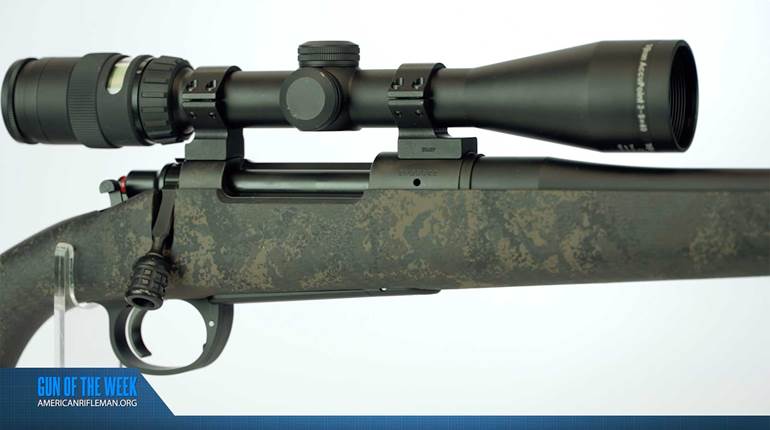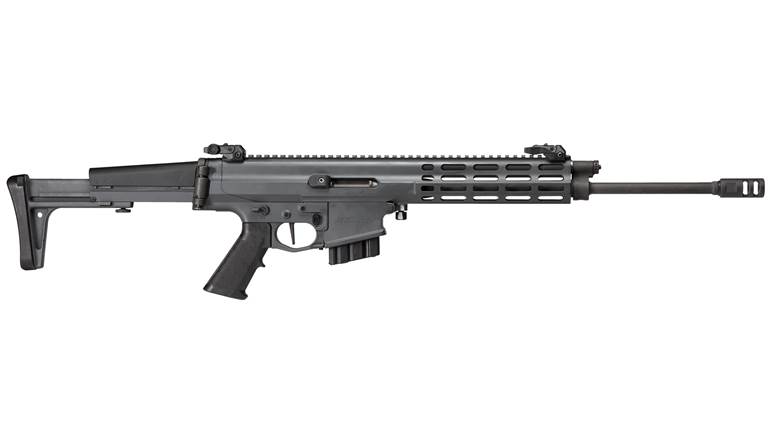
Our country’s innovations in arms design and manufacturing have been key to individual liberty from the earliest days of the Republic. In the modern era, the informal title “America’s rifle” has almost exclusively been applied to the AR-15—and for good reason. It is, after all, the semi-automatic iteration of our nation’s frontline service arms. More than that, though, the AR is the platform on which several generations of American military personnel have been trained and have come to rely during and after their time in service. And, in the long-standing tradition of military arms being adopted by the civilian populace, it has become the darling of recreational and competitive shooters and hunters who by now are intimately familiar with, and comfortable using, such a light and compact rifle.
Despite the AR-15’s inherent handling advantages and market ubiquity, however, its .223 Rem.-based frame has only infrequently been adapted—usually on a small scale and typically using modified or “borrowed” magazine designs—to the more capable .308 Win. cartridge family on which, ironically, Eugene Stoner’s original AR-10 was based. It appears that times have changed.
In “Lightweight Heavy-Hitter: Ruger’s SFAR”, Executive Editor Evan Brune explains how the familiar industry giant has once again brought its considerable engineering and manufacturing muscle to bear in pressing the AR-15 further into the “general-purpose” category. The resulting Small-Frame Autoloading Rifle is an excellent example of arms innovation that has the potential to benefit even more American hunters, ranchers and self-defenders.
Contributor Matt Robertson, an inveterate practical rifleman, in “Getting Started In “Long-Range” Rimfire Competition”, shares his experiences in learning about the somewhat-recent trend of .22 Long Rifle-based precision rifle shooting. It is an endeavor that not only helps longtime centerfire competitors stay sharp and save a few dollars, but it also provides opportunities for new shooters to enjoy the camaraderie and thrill of competitive marksmanship.
And, remembering an obscure military rifle accessory that is more typically associated with the Great War, Field Editor Bruce Canfield uncovers “The V-B Rifle Grenade Launcher In World War II”. Named after French developers Jean Viven and Gustave Bessiere, the so-called “tromblon” was a heavy metal cup that fit over the muzzle of a rifle. The U.S. military envisioned soldiers firing it at targets up to 200 yards away, and copies were adapted for the M1903 and M1917 rifles. But, as is sometimes the case with innovation, the V-B ultimately didn’t make much of an impact.
In “Selby & The Superposed: A World-Class Shotgun Afield”, contributor Joe Coogan recounts his time working for famed professional hunter Harry Selby in Africa and how a particular Browning Superposed over-under shotgun served to punctuate big-game pursuits by allowing safari clients, and Selby’s young daughter, Gail, to bring birds to bag and provide an all-around delightful experience in camp. Of course, the Superposed is another excellent example of innovation for the masses by America’s most accomplished arms designer.
And back to Ruger’s SFAR on the May cover—it might be best to think of it not as just another AR but as yet another example in a long line of American firearm innovations. Even more broadly, it is a symbol of how the free-market system, operating within the framework of a constitutional republic, creates an atmosphere for problem-solving and creativity that, in the world of firearms, leads to a more hopeful future for the citizenry and for freedom itself.
















![Winchester Comm[94]](/media/1mleusmd/winchester-comm-94.jpg?anchor=center&mode=crop&width=770&height=430&rnd=134090756537800000&quality=60)
![Winchester Comm[94]](/media/1mleusmd/winchester-comm-94.jpg?anchor=center&mode=crop&width=150&height=150&rnd=134090756537800000&quality=60)


















